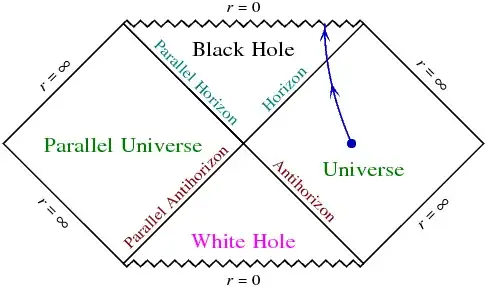What is beyond the point of singularity in a black hole and universe expands in all the three $x$, $y$ and $z$ axis?
So how can one thing be on top of another when we don't know where the end point of the things is?
And how does a black hole connect two parallel universes?
And if there is another universe then is there another milky way, solar system and Earth?
And how does a black hole connect them?
- 56,647
2 Answers
It is not necessaryly the case that black holes connect two parallel universes. But instead, that if there are parallel universes (at least one), a black hole (the sink) in one universe can connect to another universe through a wormhole (the pipe). The exit of a black hole in another universe or in another region of our universe would be a white hole (the pipe exit). If there is a parallel universe the likelihood that there is another Earth (Sun, etc.) is zero. In order for them to exist there should be a huge number of universes (and even in this case the existence of a duplicate is not granted).
To imagine how two universes are connected imagine that our universe is a two-dimensional rubber planar sheet, and the paralle universe another one that is parallel to ours and separated by some distance. The third dimension is (a fourth dimension) not observable from within the universes, but can connect them: imagine that you press one sheet and deform it such that now the two sheets are conected trough a cilindrical rubber tube (made of "space"), which is analogous to the wormhole.
The question stated "black hole", and I will answer for a non-rotating, non-charged black hole. You can see from this Penrose diagram that the black hole interior does indeed connect to both a "universe" and a "parallel universe". However they are joined at the horizon, not the singularity which is the jagged line at top labelled $r=0$. However nothing can travel between the two so-called universe regions, because any path drawn at shallower than a $45^\circ$ angle in the diagram corresponds to motion faster than light.
In fact, half these regions do not even exist for a black hole formed from a collapsing star.
- 1,278
